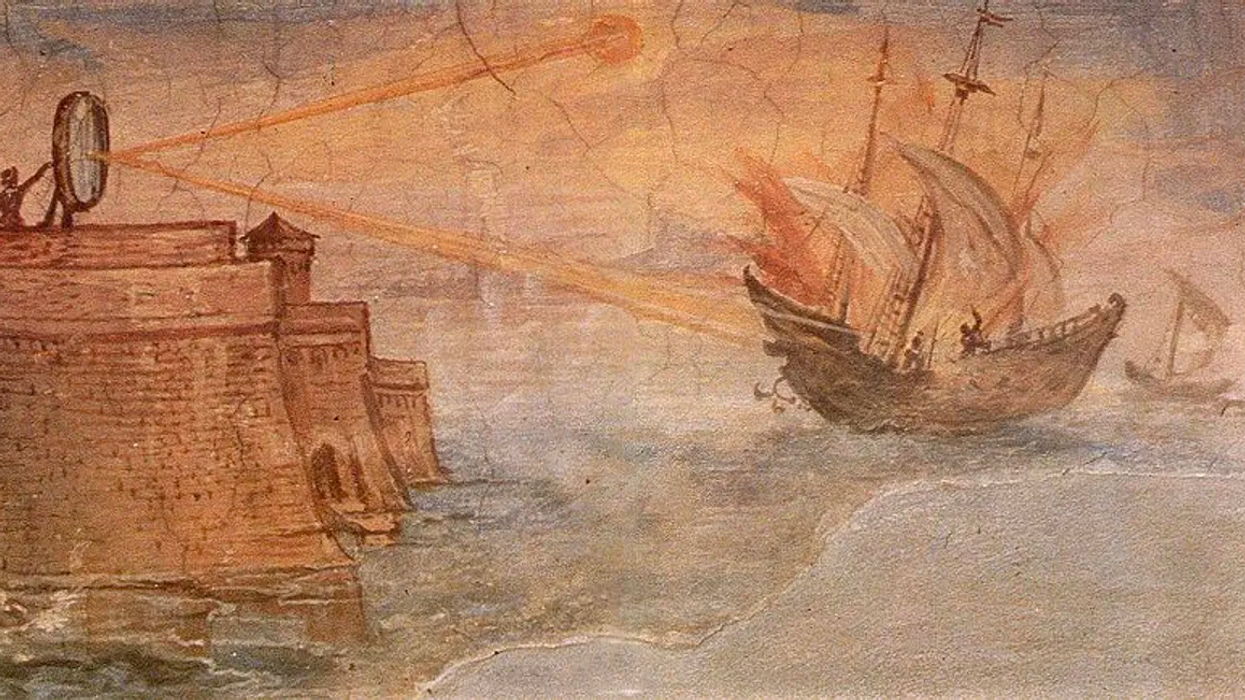Alex Daniel
Feb 15, 2024

Archimedes' famous death ray in action against the Romans
Public domain
Historians and scientists have spent centuries debating whether a so-called death ray weapon allegedly used by Ancient Greek inventor Archimedes could actually have worked.
Now, a 12-year-old boy from Canada appears to have settled the dispute once and for all.
Archimedes' death ray is said to have been used in sea battle against Roman invaders during the Siege of Syracuse in 213 BCE to 212 BCE.
It supposedly harnessed light from the sun using a series of mirrors, bouncing the rays back at Roman ships and setting them alight.
While using reflected sunlight to start fires is nothing new, whether it could actually have been used in battle is another matter entirely.
A team from the Massachusetts Institute of Technology (MIT) previously said the design could set a ship alight in just 11 minutes.
But others, including French philosopher René Descartes, have dismissed the story as implausible within a battle scenario.
Canadian schoolboy Brenden Sener made a replica death ray using concave mirrors and LED desk lamps with 50-watt bulbs – and it worked.
According to IFL Science, Sener found that the temperature of a target can be raised by two degrees Celsius with each mirror added to the equation.
He then increased the wattage of the LED lamp to 100, and found that the "change in temperature with each mirror was 4 degrees C up to 3 mirrors and an additional 10 degrees C with the fourth mirror.”
“Based on my experimental findings, I agree with the MIT group and believe that with a strong enough heat source and larger, multiple mirrors all focused at a perfect angle, combustion could be possible," he wrote.
"The historical descriptions of the use of the Death Ray in ancient Syracuse is plausible, however no archeological evidence of the Archimedes Death Ray has been found besides what is recorded in the books of Ancient Philosophers."
Sener has been handed various awards for his work, including the Matthews Hall Annual Science Fair Gold Medal, and the London Public Library Award for Inspiring Children’s Interests in Science and Technology.
How to join the indy100's free WhatsApp channel
Sign up to our free indy100 weekly newsletter
Have your say in our news democracy. Click the upvote icon at the top of the page to help raise this article through the indy100 rankings.
Top 100
The Conversation (0)













